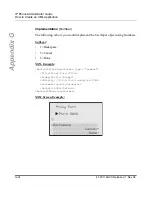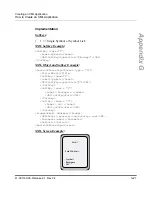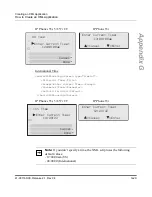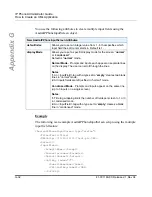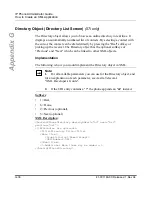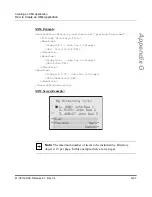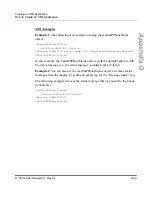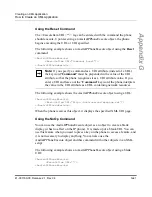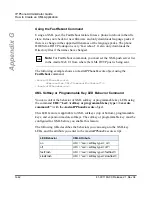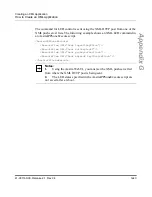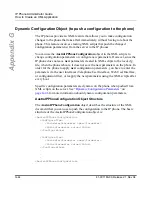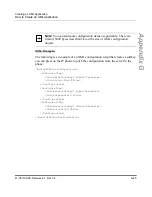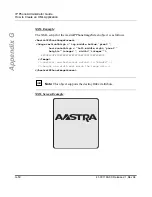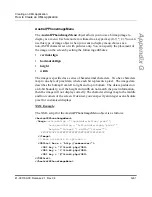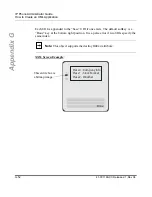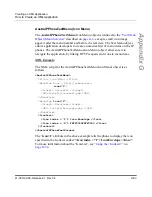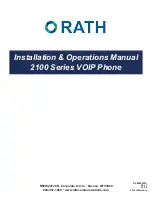
How to Create an XML Application
G-38
41-001160-00, Release 2.1, Rev 04
IP Phone Administrator Guide
Appendix G
Status Message Object (Idle Screen)
The IP phones support an XML
AastraIPPhoneStatus
object for displaying
status messages on a single designated line on the phone’s idle screen. The
messages display when the server pushes XML information to the phone.
The 57i/57i CT phones display messages on the second line in the phone window.
(where “No Service” would display if there was no service. If there is no service
on the phone, the “No Service” message overrides the XML object message). The
53i phone displays messages on the first line (overriding the DisplayName). The
phone truncates long messages that are wider then the phone screen.
If the phone receives multiple messages, the first message received displays first
and the remaining messages scroll consecutively one at a time. Messages remain
displayed
until they are removed (by the server) or
the phone reboots. The
AastraIPPhoneStatus object feature is always enabled.
AastraIPPhoneStatus Structure
The
AastraIPPhoneStatus
object describes the structure of the XML document
that you can use to send status messages to the phone. The basic structure of the
AastraIPPhoneStatus object is:
<AastraIPPhoneStatus>
<Session>My session ID</Session>
<Message index="Msg index">Message</Message>
<! -- Additional status messages may be added under new Message tags-->
<AastraIPPhoneStatus/>
The ”
My Session ID
” attribute must be unique to the application sending the
XML object to the phone. The application generates the session ID, which could
be a combination of letters and numbers. There is a maximum of one
<Session
>
tag per PhoneStatus object, so the
<Session
> tag is optional.
Note:
You can set the amount of time, in seconds, that a message displays
to the phone before scrolling to the next message. For more information
about this feature, see
“Scroll Delay Option (configurable via config files
and Aastra Web UI only)”
on
page G-58
.

